Context Inside of LCCC
LCCC has grown substantially since its inception, although there have been times of growth and attrition throughout its enrollment history. Over the past decade, the College’s enrollment has gone from record peaks during the Great Recession to present day numbers more reflective of enrollment at the turn of the century. Figure 1 provides a historical picture of headcount and full-time equivalent (FTE) enrollment in the College’s credit-bearing coursework.
Figure 1. LCCC Annualized1 Enrollment History
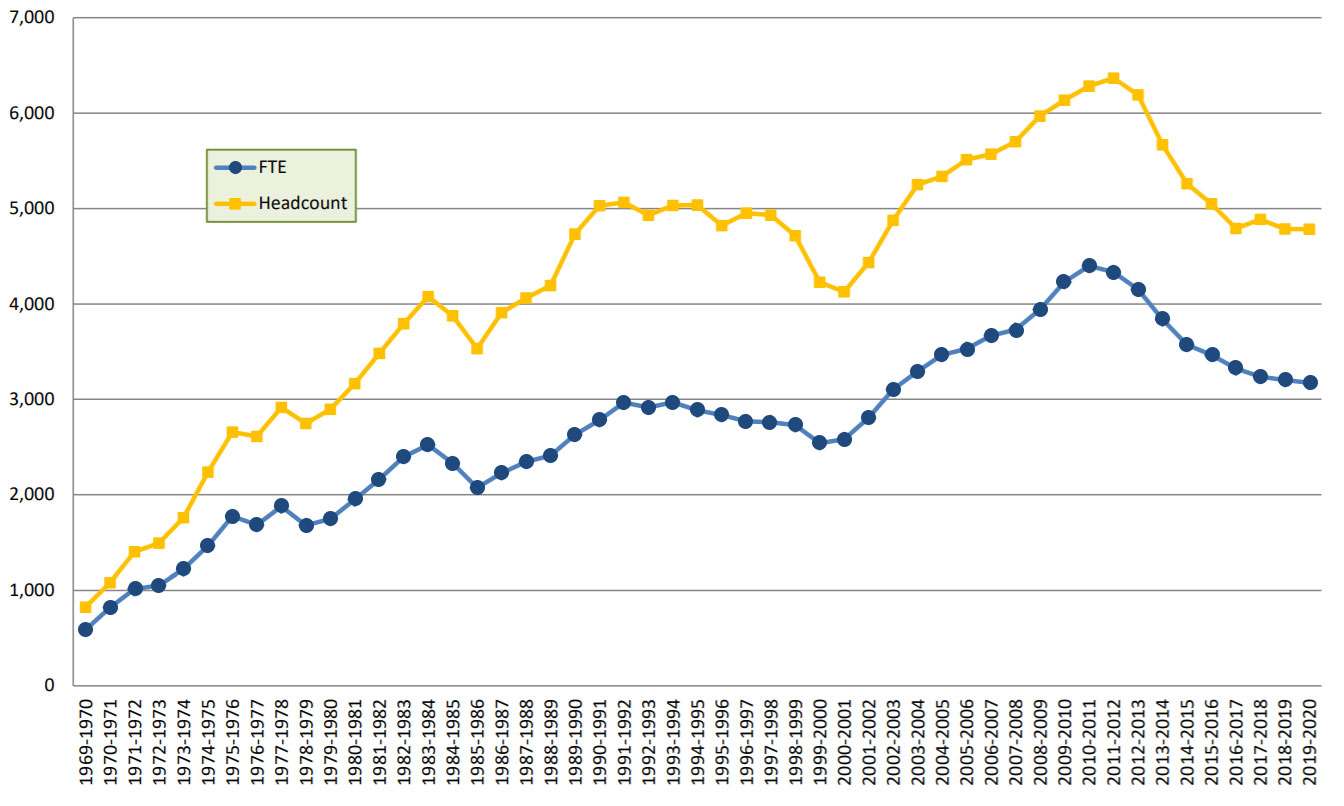
1Annualized: (summer+fall+spring)/2 | For enrollment reporting purposes, the academic
year includes the summer, fall, and spring semesters
Source: Official Enrollment Reports | Prepared by: LCCC IR Office, DRM, 06/26/2020
Although enrollment has declined, over the past decade LCCC has increased the award of post-secondary degrees and certificates by more than 38 percent. Reflective of the efforts from the previous strategic plan and a focus on improved outcomes, specifically through LCCC’s efforts at institutional redesign through Guided Pathways, the College celebrated five of the largest graduating classes in the 50-year history of LCCC between 2011 and 2021. See Figure 2.
Figure 2. LCCC Degrees and Certificates Awarded 2009 to 20201
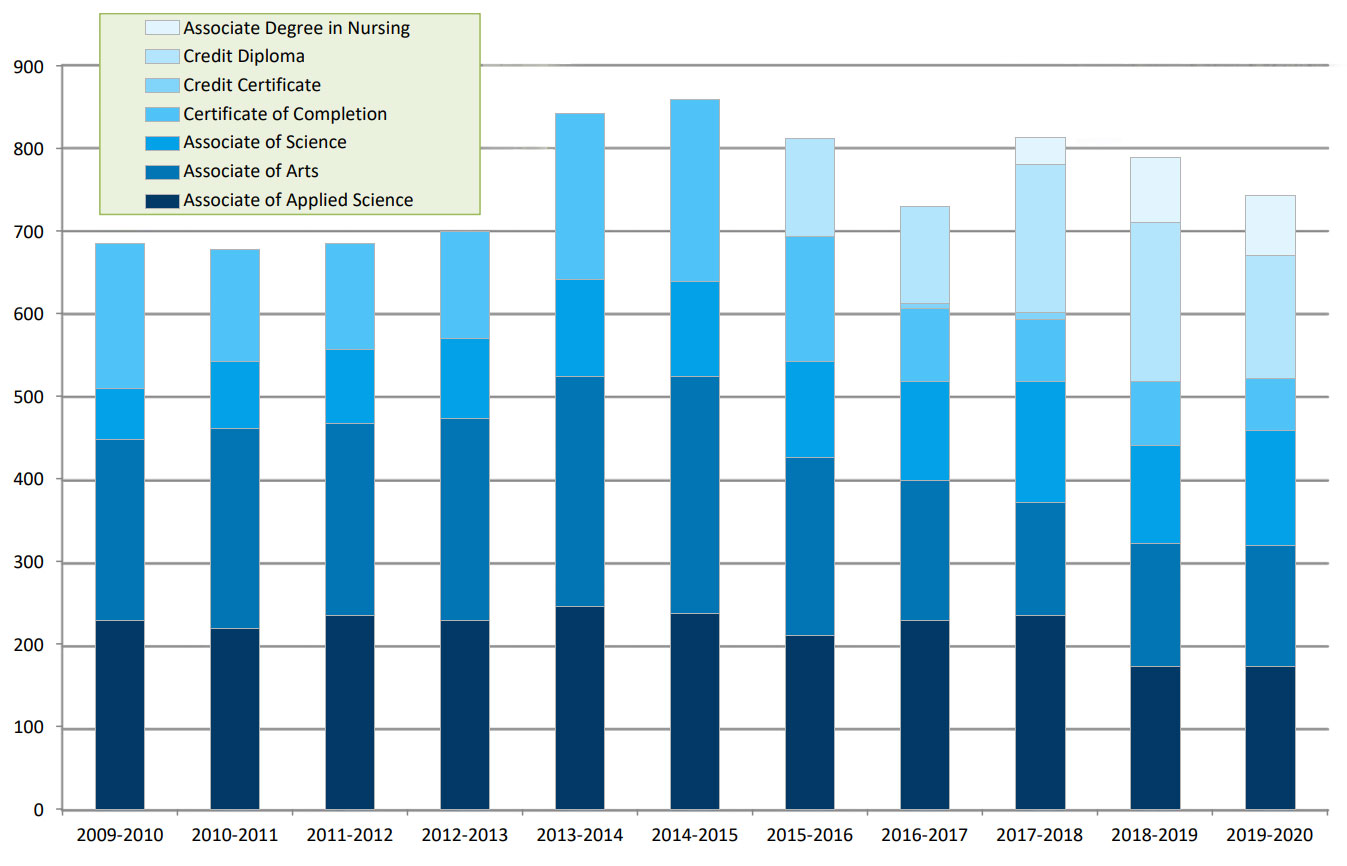
1For reporting purposes, the academic year includes the summer, fall, and spring semesters | LCCC IR Office, DRM 7/17/2020
Overall Increase: 1 year = 2.96% | 10 year = 38.31%
A decade ago, LCCC students graduated at the lowest rate of all colleges in Wyoming, and substantially lower than the average for community colleges across the nation. In 2011, LCCC’s overall graduation rate was just 13 percent. Today, that rate has more than doubled, with 28 percent of all first-time, full-time students graduating within 150 percent of the time to completion. Although this progress is worth celebrating, there is considerably more work to do to improve students’ success during their time at LCCC. Perhaps more importantly, our focus now must shift to equitable achievement of post-graduation outcomes when our students leave the College.
Access and affordability are still cornerstones of community colleges, and historically
an education in a Wyoming community college such as LCCC was an exceptional value.
While one can still argue this point, unfortunately costs to students and their families
continue to rise. The Wyoming Community College Commission (WCCC), who is statutorily
responsible for setting tuition rates for the seven Wyoming community colleges, has
raised tuition seven times in the past decade. In 2011, one credit cost Wyoming residents
just $71, and in 2021 this has grown to $105, a 48 percent increase over that time.
Where Wyoming’s community colleges used to offer resident tuition and fees well below
the average of the western states comprising the Western Interstate Commission for
Higher Education (WICHE), Wyoming is now well above the
average. See Figure 3.
Figure 3. Annual Tuition and Fees, LCCC vs Western Interstate Commission for Higher Education
Resident rates assuming 12 credits per semester.

Community colleges have historically provided open admission and an affordable path
to a higher education, especially for those populations with financial challenges.
As a result of the latter, community colleges have focused on ensuring the cost of
attending a 2-year institution is significantly lower than that of a 4-year one. Tuition
increases in Wyoming, and the University of Wyoming (UW) constitutionally directed
low tuition rates, have made that price differential shrink to concerning levels.
In 2011, the cost of coming to LCCC was 65 percent of that at UW, and by 2021 that
had risen to 77 percent. Both of these are well over the WICHE region which sits at
41 percent. This trend makes the
affordability argument more difficult to make for choosing a Wyoming community college
over a University. See Figure 4.
Figure 4. Community College to University cost differential
LCCC: UW vs WICHE 2 Year: 4 Year
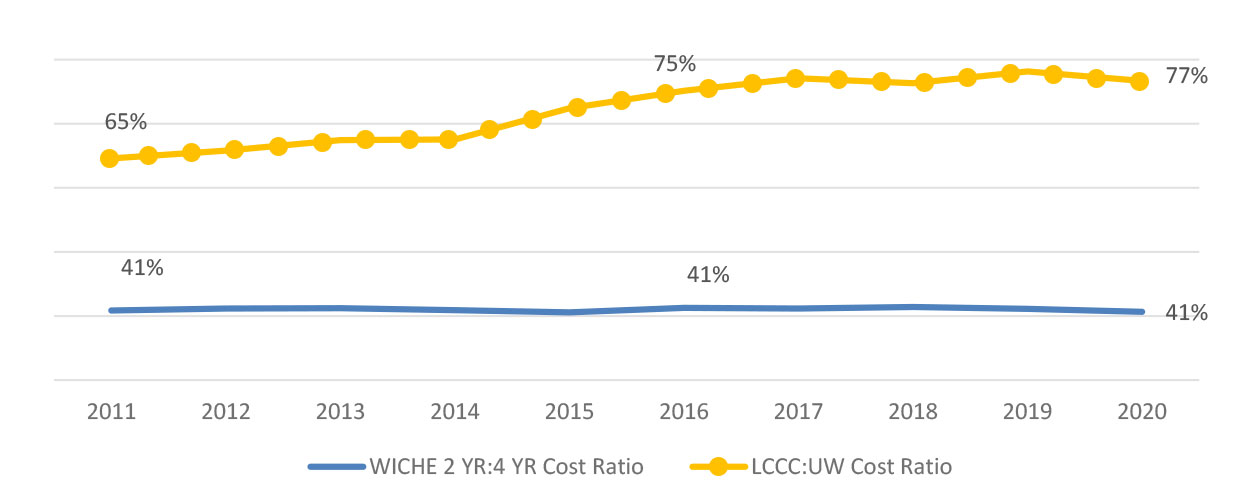
Integrated in the environmental scanning process, a deep examination of the internal context revealed several areas of challenge and potential opportunity.
Not surprisingly, many of these had indirect correlations to those external challenges and opportunities facing LCCC. These are briefly summarized in the following.
Financial Stability
LCCC’s revenues derive from three sources – tuition and fees, local taxes, and state appropriation. The economic challenges that have faced Wyoming’s economy – primarily a result of the decline and volatility in the extractive industries - have continued to ripple into its funding and support for higher education. Over the past decade, state support for Wyoming’s community colleges has decreased by nearly $100 million without adjusting for inflation. LCCC’s state funding has decreased by more than 25 percent since fiscal year 2016, and the College has had to implement budget reductions three times, with the latest in 2020 resulting in a reduction of more than $8 million to the biennial budget. Future state funding is uncertain and will likely remain volatile.
One of our goals is to become the best-known higher education opportunity within 350 miles of Cheyenne.
Fortunately, revenues generated from local property taxes have continued to increase
as Laramie County’s economy grows. But we aren’t immune to the fluctuations in the
oil and gas industries, with recent impacts to these areas resulting in estimated
decreases in local funding for the first time in nearly ten years. Even when local
funding increases, the current allocation model used by the WCCC tends to pull state
funding from areas of increasing local support to redistribute to college districts
with decreases in local funding, resulting in a net-neutral or even negative overall
funding impact.
Which leaves tuition, and as a result, enrollment, being the primary source of funding
that LCCC must look towards to be able to garner some control over our financial stability
in the foreseeable future.
Enrollment Growth
Stated in numerous places within this analysis, LCCC’s future, and the future of the communities it serves, will be increasingly dependent on the College’s ability to enroll substantially higher numbers of students. LCCC will need to intentionally focus on increasing not only the number of students who matriculate to the College, but also the number of students who persist and complete a credential.
Strategic marketing, recruitment, and retention efforts for specific populations such as part-time students, adult and working students, first-generation students, and Veterans will be essential to enrollment growth. There will also be an increasing need to recruit non-residents students, engage them towards a postsecondary credential, and find ways to encourage them to stay, work, and live in Wyoming. Equally important is creating a culture of building and sustaining relationships and partnerships with key stakeholders including students, community supporters, and industry leaders.
Brand/Program Awareness
For the College to engage more students, it must greatly expand the area with which our brand and programs are known. Potential students, and in many cases those who will influence them (i.e. parents, employers, etc.) must be aware of who we are and what we do and what we offer. This will require a more intentional outreach and engagement with a much broader geographic region. Awareness is only one part of this challenge. In addition, the College must be sure that our brand and what we offer are not only known, but are also seen positively and desirable amongst those populations within a larger region.
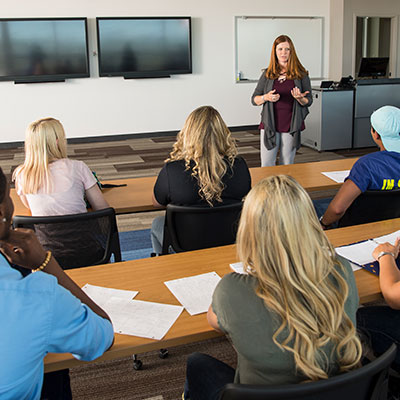
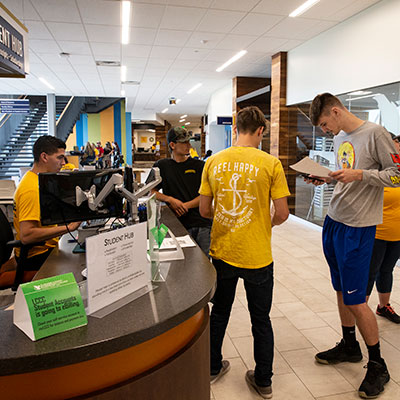

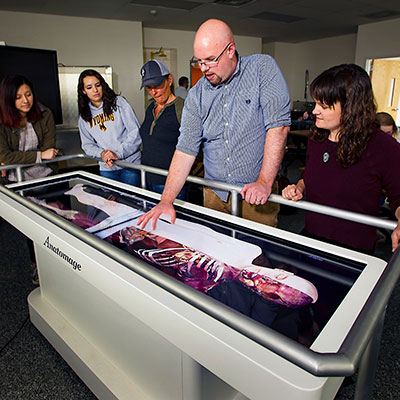
Program Relevance
Both students and employers demand programs that have direct linkage to their needs, hopes, and desires. Whether this is for a highly skilled, competent workforce, or real opportunities for social mobility through the attainment of a good-paying, satisfying career, it is imperative that the programs LCCC offers are relevant in today’s marketplace and connect individuals to tangible opportunities post-graduation. Thus, it is not enough for people to simply be aware of what we do and what we offer, our programs also need to be relevant to real life opportunities.
Student Experience
If students demand a unique experience, then LCCC must find ways to create one in hopes of differentiating LCCC from other colleges and universities. Much of that will be grounded in how students engage outside of the classroom as much of what occurs within the curriculum.
The College needs to finalize the creation of the experiences it has already begun. We have previously focused on: Collaboration as the students’ ability to foster teamwork, consider needs of partners, and work toward a specific goal as part of a team; Immersion as the students interaction with and ability to learn from a community or culture outside of their own through transformative, hands-on, and reflective experiences; and Synthesis & Application as the students ability to identify and apply skills learned in academic, collaborative, and immersive experiences in a formalized reflective final project.
![]()
![]()
![]()
![]()
![]()
![]()
![]()
![]()
Student Success
LCCC has invested significantly in efforts that create an environment where students can succeed. None more transformative than the College’s work with Guided Pathways. Yet, diversity, equity, and inclusion efforts are multifaceted processes through which we strive for excellence in teaching, learning, student engagement, workforce development, and community partnerships. Although much progress has been made, there is more work to be done to address equitable outcomes for specific populations such as students of color, part-time students, adult and working students, first-generation students, and Veterans. LCCC identifies student success as providing all students access to the necessary resources and tools to prepare them for the next step of continued education or quality employment.
Conclusion
Like Wyoming, LCCC and the communities we serve are at a crossroads. Significant support from an era of great resources and a decade of hard work has positioned the College well to have a meaningful influence over the future success of our students, state and region. Yet that future is not without its challenges, nor is it absent of significant opportunities. The comprehensive environmental scan conducted as part of the strategic planning process has revealed the risks as well as rewards that await an institution willing to continue its journey towards excellence. LCCC is such an institution, and from this inquiry we have built a plan for our future. That plan is detailed in the Goals & Strategies.

